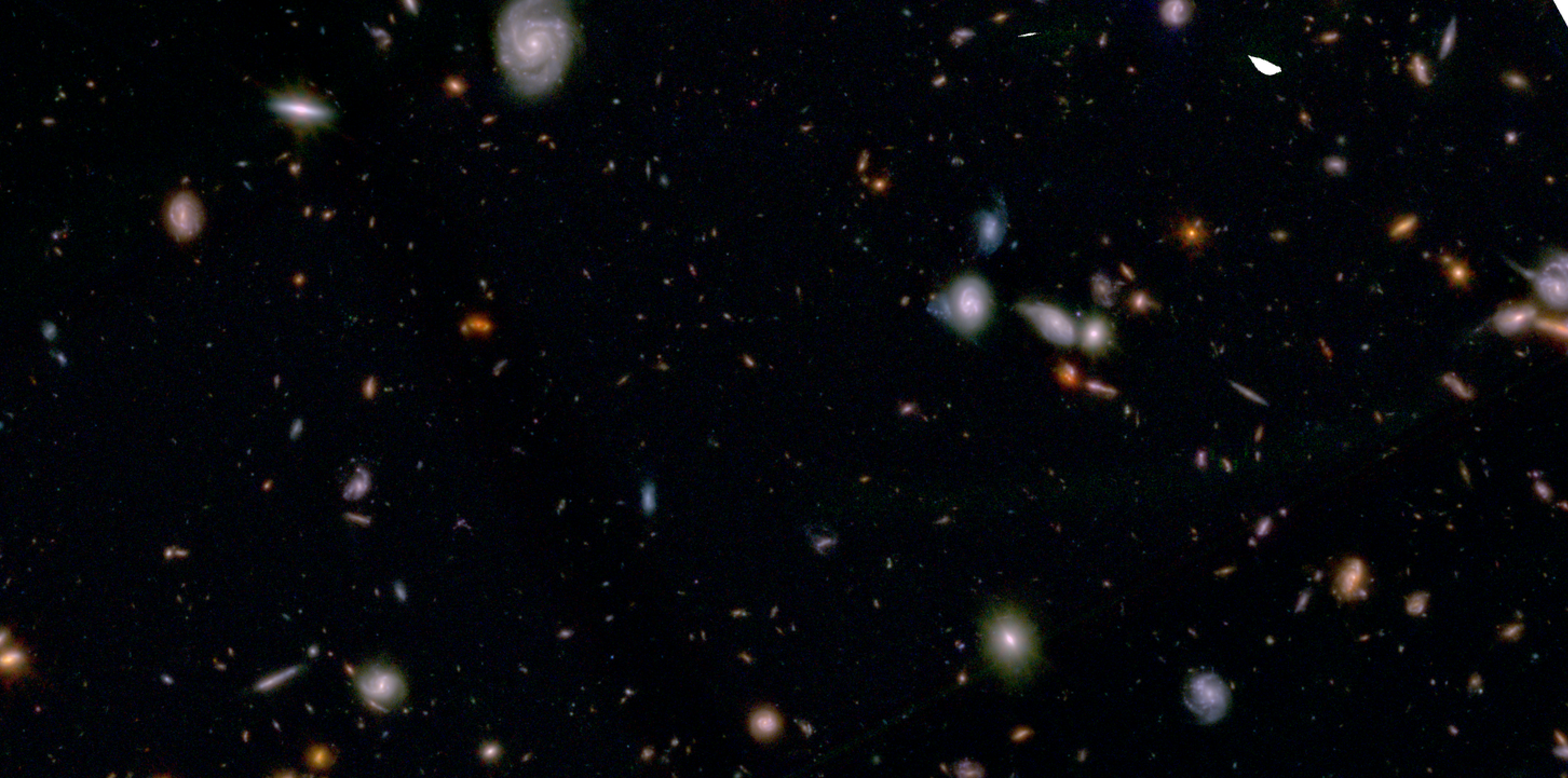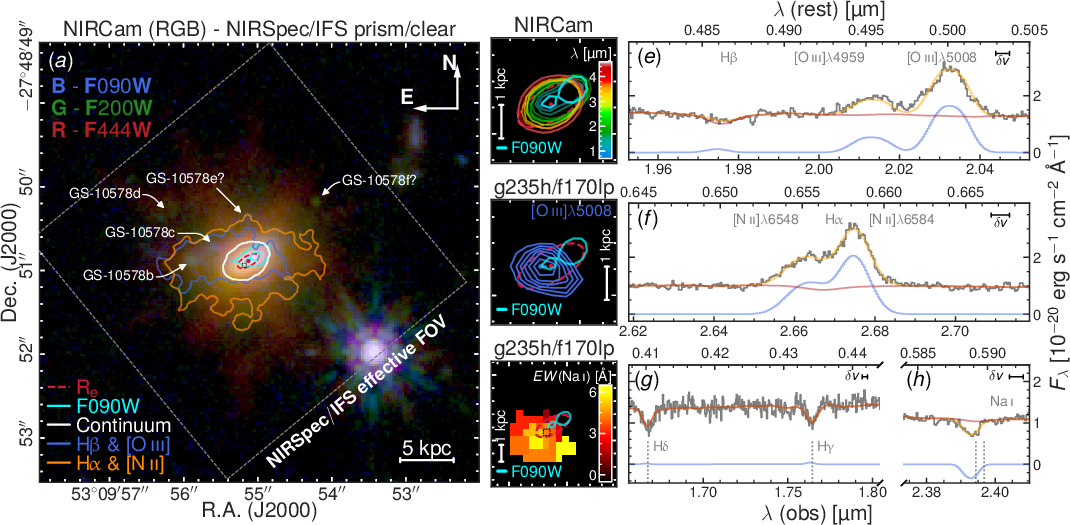
Supermassive black-hole quenching
The most massive galaxies in the local Universe are all invariably old and quiescent.
We know that star formation in these galaxies was quenched by feedback from their
central supermassive black holes, but the exact mechanism is not yet known. The main
difficulty is that the quenching epoch is so far in the past, that intervening evolution
has cancelled any distinctive signature of different quenching mechanisms.
The advent of JWST enables us to look at these massive galaxies during the
epoch when they were still forming stars and first becaume quiescent. This gives us the
opportunity to study the distinctive signatures of quenching as they are imprinted on
the kinematics and stellar populations of the first quiescent galaxies.

The galaxy GS-10578 (panel a), with the stars traced by the red dashed ellipse and white solid contour, and the gas distribution traced by the blue and orange contours. The cyan contours show rest-frame UV light. Panels e-h show three spectral regions from the spaxels highlighted by the (very small) dashed square in panel a; from top to bottom, we show H\(\beta\) and \([\rm{O\,{\small III}}]\) emission, H\(\alpha\) and \([\rm{N\,{\small II}}]\) emission, and H\(\delta\) and H\(\gamma\) absorption. The ratio between the H\(\beta\) and \([\rm{O\,{\small III}}]\lambda5008\) and between H\(\alpha\) and \([\rm{N\,{\small II}}]\lambda6584\) tells us that the ionised gas lines in GS-10578 are powered by photoionisation from an active galactic nucleus. Panel h shows \(\rm{Na\,{\small I}}\) absorption, evidence for a fast neutral-phase outflow, with mass loading capable of interrupting star formation.